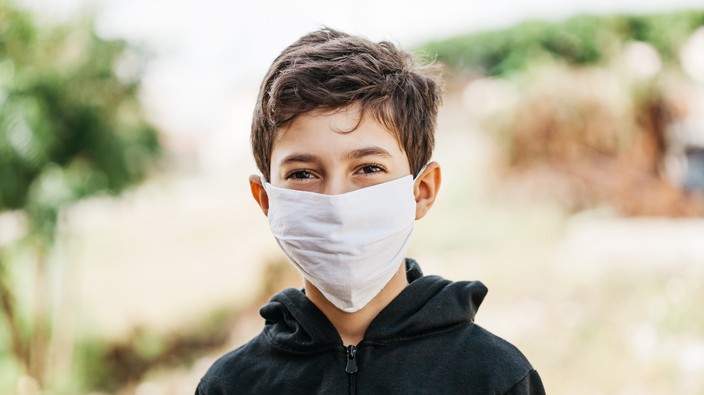- younger children can learn how to properly wear a mask
- “bubble buddies” of three students or fewer could reduce a child’s rate exposure rate to one per cent
- covid-19 tests show high rate of false negatives, which calls into question how long kids who recover should stay home from school
come september,
schools will reopen with students between grades four and 12 in
alberta and
ontario expected to wear masks. but what about those who are younger?we should be teaching children to wear masks, says
dr. anna banerji, a pediatric infectious, tropical disease specialist and global health specialist, and director of global and indigenous health in the faculty of medicine at the university of toronto.while banerji says allowing children in grade three or younger to be exempt from mask-wearing seems reasonable, but it is possible for them to learn how to wear masks properly. the only exemptions currently are
children under the age of two, according to canadian guidelines.“seven- or eight-year-olds could wear masks,” she says, adding that younger children may find it difficult to understand the importance of proper mask wearing. “if they’re playing with [the mask], they risk contaminating themselves. it depends on the maturity of the child.”and masks are not the only challenge with ensuring young children follow strategies to protect themselves. “it’s very difficult to physically distance young children, says banerji. “it’s in their nature to play with others.”while secondary schools are
limiting class sizes to 15 students, there is no indication of restricting class sizes in elementary schools.without smaller class sizes in elementary schools and younger children forgetting to physically distance, younger
children may be vectors for covid-19. and while face masks can be irritating for younger children, it’s worth it to teach them how to wear a mask, and have them practise wearing it, in these remaining weeks of summer, says
ryan imgrund, a southlake regional health centre biostatistician and science teacher.in a recommendation letter imgrund wrote for sickkids hospital
, he supports the use of masks in schools, saying the viral load on a mask will be low if every student and teacher is wearing one and washing their hands.face shields are another option, he says, for students in grade three and under, if masks are difficult.still, face
masks are better than face shields, for containing droplets, says banerji, adding that even though face shields may be better for communication and can protect particles from entering the eyes, if kids are coughing, the shields won’t contain droplets as well as a face mask.
“some studies have shown that young children may not transmit as much [covid-19] because they don’t have the strength to cough up the particles,” she says. “for example, tuberculosis is not really something that children transmit. but covid-19 is an evolving science so we don’t really know.”this uncertainty makes it even more critical that we make decisions about how to get kids back into school safely based on what we know — and that’s that distancing and wearing masks slows the spread of the virus.“if we are asking students to mask and be socially distant, the chance of encountering an infection will be much smaller than the risk of transmitting it,” writes imgrund in the recommendation letter to sickkids hospital.he suggests “bubble bubbies” of three or less for children in younger grades, where physical distancing is difficult, adding that if a teacher is provided with the proper ppe, this would reduce an individual student’s exposure rate to less than one per cent (in ottawa).using the most recent numbers from ottawa public health, the biostatistician says if students are wearing masks and staying physically distant in a class of 15, there is a 3.8 per cent chance of encountering another student with transmissible covid-19 infection. imgrund calculated that that number jumps to 25 per cent if a student were to take four classes with pre-covid class sizes, and more than three in four chances, if students have a lunch with 500 students.besides the proper use of protection, banerji is also concerned about recommendations that sick children
should stay home until they get tested, with a negative result. ontario guidelines say once someone received a negative test, and have been symptom-free for 24 hours, they can return to school. “tests are falsely negative about 30 per cent of the time so i don’t know if we can rely on the test,” she says. “do we want kids to be coming back to school even though they’re 24-hour symptom-free, but still might have covid?” obviously this is a question that calls attention to the larger issue of the systems surrounding testing, perhaps requiring a closer look the policies around how long people wait before reintegrating into society post-virus.still, with the start of the school year rushing towards us, discussions around keeping our kids from getting the virus in the first place with masks, physical distancing and other hygiene measures are essential — as is being able to assure them that their school environment is safe.
dduong@postmedia.com |
@dianaduodon’t miss the latest on covid-19, reopening and life. subscribe to healthing’s daily newsletter coming out of covid.
 4 minute read
4 minute read









